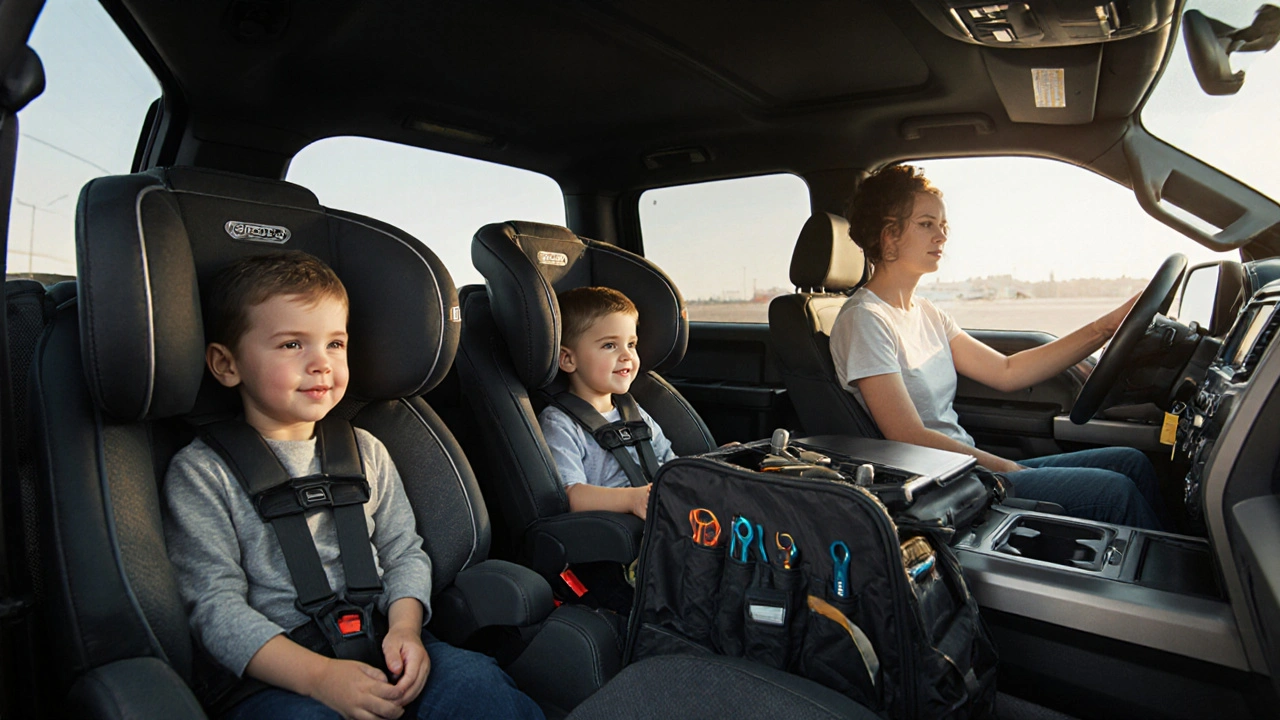When you’re shopping for a truck cab, the enclosed passenger area of a pickup truck that determines seating, storage, and comfort. Also known as truck cabin, it’s one of the most overlooked but critical choices when buying a pickup. Most people focus on engine power or towing capacity, but the cab style affects your daily life more than you think. Will you be hauling kids, tools, or coworkers? Do you need easy access to the back seats, or is occasional use enough? The answer changes everything.
There are three main types: regular cab, a two-door design with just front seats, often used by workers who need a basic, affordable truck, extended cab, a mid-size option with small rear jump seats or storage behind the front bench, and crew cab, a full-size four-door cabin with room for five adults comfortably. Each serves a different purpose. Regular cabs are cheaper, lighter, and easier to park—great for contractors who only need occasional passenger space. Extended cabs offer a middle ground: more room than regular, but less cost and fuel drain than crew cabs. Crew cabs are the default for families, delivery teams, or anyone who regularly carries passengers.
It’s not just about seat count. A crew cab adds nearly a foot of length to the truck, which affects turning radius, parking, and even garage fit. You pay more upfront—often $2,000 to $5,000 extra—and you’ll see a drop in fuel economy. But if you’re hauling kids to soccer practice or coworkers to job sites, that extra space pays off fast. On the flip side, an extended cab might have rear doors, but getting in and out is awkward if you’re over six feet tall. The rear seats are better for short trips or gear storage than actual passengers.
Some buyers don’t realize that cab size affects cargo too. A regular cab truck often has a longer bed because the cabin is shorter. If you haul long lumber, pipes, or bikes, that extra foot of bed length matters. But if you need to carry tools inside the cab—like power tools, ladders, or safety gear—crew cabs have more interior storage space. Extended cabs sometimes offer under-seat storage, but it’s tight and hard to access.
Resale value also shifts with cab style. Crew cabs hold value better because they’re in higher demand. In markets like Texas, Florida, or the Midwest, buyers expect a crew cab. In rural areas where trucks are used for work, regular cabs still sell well. And if you’re buying used, watch out for extended cabs with worn-out rear seats—those are expensive to replace.
There’s no single right answer. But if you’re unsure, ask yourself: Do you regularly carry more than two people? Do you need rear doors that open fully? Do you use the back for gear or people? If you answered yes to any of those, skip the regular cab. If you’re on a tight budget and rarely need extra seats, an extended cab might be enough. But if you want flexibility, comfort, and future-proofing, a crew cab is the smartest pick for most people today.
Below, you’ll find real-world comparisons, cost breakdowns, and owner experiences from 2018 models that show exactly how these cabs perform in everyday use—no marketing fluff, just what matters when you’re behind the wheel.
Posted by
Liana Harrow
15 Comments

Crew cabs offer more space for families and work teams, while extended cabs save money and add bed length. Learn which pickup truck cab type fits your real-life needs-kids, tools, parking, and resale value included.
read more